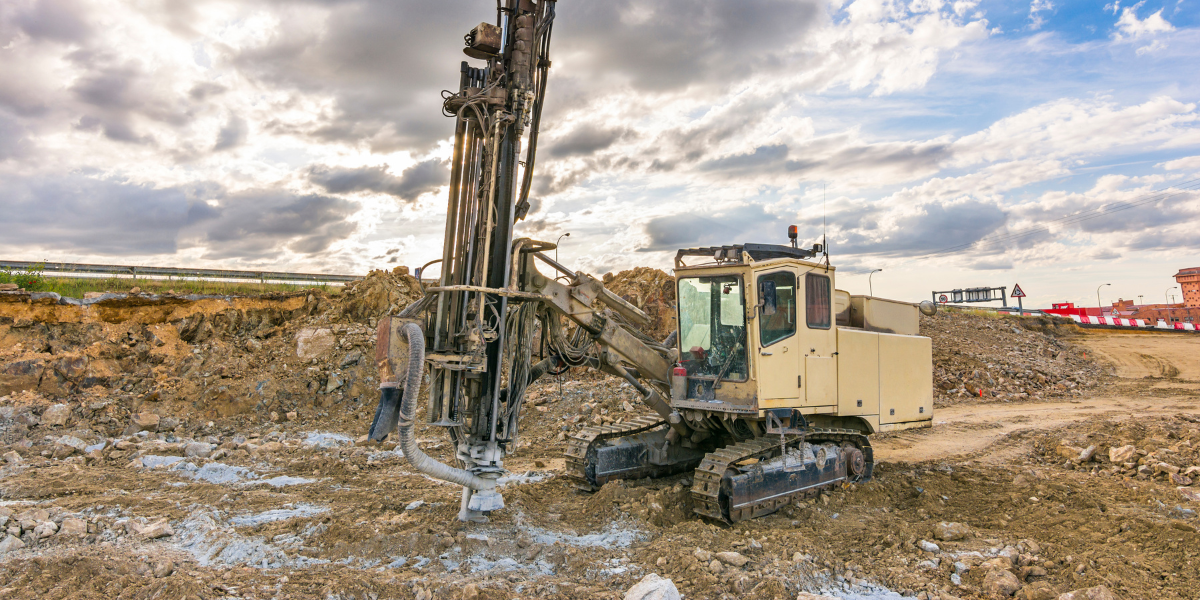Project Geotechnical Engineer for Tailored Site Evaluations
Wiki Article
How Consulting Engineers Enhance Geotechnical Engineering Projects: Insights Into Their Competence, Techniques, and Collaborative Approaches
Consulting engineers are pivotal in improving geotechnical design jobs, applying their specialized knowledge to browse the intricacies of subsurface problems. Their joint methods foster interaction amongst varied job stakeholders, ultimately forming the project's trajectory.Role of Consulting Engineers
The experience of seeking advice from engineers in geotechnical engineering is essential to the successful execution of building and construction jobs. These professionals play an essential function in evaluating soil and rock homes, which are essential factors influencing design and construction choices. By performing extensive website examinations, consulting engineers gather necessary information that educates the layout procedure, guaranteeing tasks are improved stable and suitable ground.Consulting engineers also offer vital understandings right into risk management (geotechnical geologist). They identify potential geotechnical hazards, such as landslides, soil liquefaction, and negotiation concerns, making it possible for stakeholders to execute effective mitigation strategies. Their competence aids in optimizing foundation layouts, which can lead to substantial price financial savings and improved safety
Additionally, seeking advice from engineers act as a vital web link in between job proprietors, engineers, and contractors. Their capacity to equate complex geotechnical information right into workable referrals promotes collaboration and promotes notified decision-making throughout the job lifecycle. This multidisciplinary approach not only enhances task effectiveness but additionally guarantees compliance with governing criteria and best practices.
Secret Approaches in Geotechnical Design

One primary methodology is site examination, which entails conducting field tests and research laboratory evaluations to collect information on subsurface conditions. Techniques such as Requirement Infiltration Screening (SPT) and Cone Infiltration Screening (CPT) are widely utilized to review soil stratigraphy and toughness. Additionally, geophysical techniques, including seismic and electrical resistivity surveys, supply non-invasive methods to analyze subsurface characteristics.
Another important methodology is numerical modeling, which enables engineers to mimic various scenarios and predict how soil-structure interactions will behave under different loading problems. Limited Component Evaluation (FEA) is a typical approach employed in this context.
Moreover, the layout of structures, preserving frameworks, and earthworks depends heavily on these methodologies - geotechnical geologist. By integrating advanced logical devices with field data, speaking with engineers can develop customized options that attend to particular project obstacles, eventually contributing to the stability and safety of building and construction tasks
Value of Soil Evaluation
Soil evaluation acts as a foundational component in geotechnical engineering, providing important insights into the physical and chemical residential properties of soil essential for efficient construction preparation. Comprehending dirt qualities is crucial for identifying its load-bearing ability, drain actions, and capacity for negotiation or instability. Detailed soil examinations, including sampling and lab screening, help recognize criteria such as soil kind, dampness content, thickness, and shear strength.
These evaluations educate the selection of proper construction methods and materials, eventually affecting project security and longevity. Natural dirts might require different structure styles compared to granular soils, demanding customized design solutions. Dirt evaluation help in determining pollutants that might present risks to human health and wellness or the setting, allowing for the growth of reduction approaches.
Integrating dirt analysis into the onset of project development helps to minimize unexpected difficulties, guaranteeing that designers can prepare for and deal with prospective issues before they rise. By developing a thorough understanding of the website problems, getting in touch with designers can enhance design efficiency and lower expenses, thus enhancing the total success of geotechnical design projects.
Collaborative Strategies in Jobs
Effective geotechnical jobs commonly depend upon collaborative strategies that unite diverse proficiency from various techniques. Efficient collaboration websites amongst speaking with engineers, rock try this site hounds, ecological researchers, and construction specialists is vital for dealing with complex difficulties and optimizing job outcomes. By leveraging the one-of-a-kind skills and expertise of each team participant, projects can take advantage of an all natural understanding of the site problems, regulatory needs, and engineering restrictions.Normal communication and interdisciplinary meetings promote the sharing of insights and cultivate a culture of team effort. These joint efforts allow the identification of potential dangers early in the task lifecycle, permitting timely reduction approaches. Furthermore, including feedback from stakeholders, including regional areas and regulative firms, guarantees that all viewpoints are considered, boosting job acceptance and compliance.
In addition, the integration of advanced innovations, such as Geographic Info Solution (GIS) and Building Info Modeling (BIM), additional improves partnership. These devices permit the real-time sharing of information and visualization of geotechnical problems, advertising informed decision-making. Ultimately, a collaborative approach not only improves project execution but likewise lays the foundation for innovative services to complex geotechnical engineering challenges.
Influence On Task Results

Consulting designers employ innovative approaches such as danger evaluation and predictive modeling, which enhance the precision of project forecasts. Their ability to integrate cutting-edge modern technologies, like geotechnical instrumentation and data analytics, additionally refines the design and construction procedures. Because of this, projects experience boosted efficiency, reduced prices, and minimized hold-ups.
Additionally, fostering efficient interaction and partnership among staff member boosts analytic capacities. When obstacles emerge, an unified front permits speedy recognition of services, avoiding prospective setbacks. Ultimately, the collaborative i was reading this efforts of seeking advice from engineers add to better outcomes, guaranteeing that jobs meet both regulative requirements and client expectations.
Conclusion

Report this wiki page